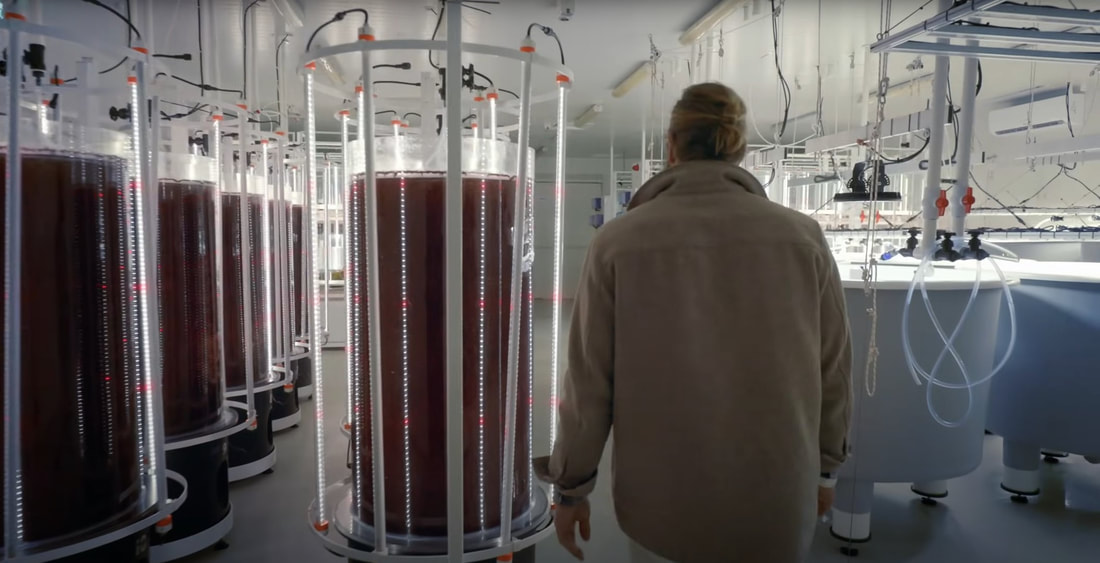Algae lights for commercial algae production. |
"Algae is the perfect food plant. It doubles cell mass every twelve hours, depending on the strain."
Homaro Cantu
Homaro Cantu
Algae lights for commercial algae production. |
|
Welcome to our Algae Lights for commercial production page where you will discover information about amazing algae, the most efficient lighting spectrum and design to increase algae culture density during all phases of algae growth development.
Algae species are one of the first building blocks in evolution. |
|
What is algae?
To start with the term algae is related to photosynthetic organisms of which there are more algae species than we can imagine. More species than all known plants and animals and we are continually identifying more and more. Algae can be found wherever there is light both visible and non visible to the human eye, wherever there is moisture and micro-nutrients for them to grow and divide. |
|
Microalgae are larger than cyanobateria but are tiny individual single cells. They grow and divide when conditions are conducive to the species of microalgae to form a cluster of cells becoming visible to our eyes or "saturated culture". The saturated culture can be used for a whole range of commercial applications. Microalgae can be used for feeding the aquaculture food chain to commercial food additives, pharmaceuticals, cosmetics, bio-fuels and improved stock feed both nutritionally and also at the back end of cows with dramatically reducing methane and carbon dioxide emissions.
Microalgae can be red, brown or green of which we have discovered thousands of species with thousands yet still to be discovered. |
Macroalgae are multi-cellular and grow much larger than the microalgae. Organisms such as seaweed, kelp and sea grasses are types of macroalgae and have been used as a source of food and nutrition in many cultures for hundreds if not thousands of years.
Today we use macroalgae`s not only for commercial food additives and products such as sushi wrappers but gelling agents in textiles (sodium alginate), pharmaceuticals, bio fuels and carbon catchment storage systems. Macroalgae`s are fast growing making them commercially viable to farm in a controlled environment with our algae grow lights. |
|
Why is commercial algae production becoming popular?
|
|
Commercial algae production is on the rise with large farming operations being set up world wide. The need to feed the world can be done more profitable and more environmentally sustainable with this emerging industry. The benefit algae offers to humans is enormous.
Aquaculture and fish farming alike rely on amazing algae as a food source in the chain of production. Development of different algae species will in time lead to a healthy farmed products free of trace metals and toxins as in wild catch seafood. The elimination of using waste animal based feed products and the shift towards commercially available algae organic feed pellets in fish farms will increase quality, production and marketability. Cattle, chicken feed lots and our planet will benefit from using algae as an alternative food source as algae is not only cheaper to produce than grain and cereal crops but is expected to reduce methane and carbon dioxide emissions by around 80%. Waste water treatment for industry and public facilities can use algae to clean up toxins and waste chemicals. Algae can be utilized as a bio-fuel as well as a substitute in industry petrochemical processors. |
Astaxanthin
The worlds most powerful antioxidant (by 100 fold) Astaxanthin is a health food supplement, an organic dye used in the food industry and cosmetics industry where the dry weight finished powder can be worth between $2,000 to $10,000 per kilogram depending on its quality and purity.
|
|
Microphyte Micro algae
|
Commercial Algae Production
|

|
ECO INDUSTRIAL SUPPLIES
403 Julia Road Hampden South Australia 5374 PHONE 0458 158 777 +0061 458 158 777 |